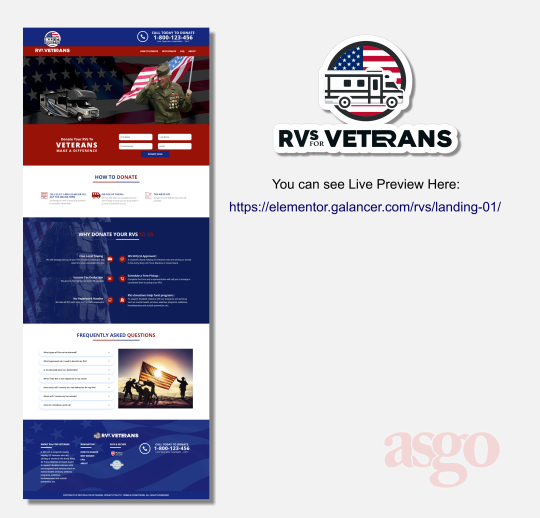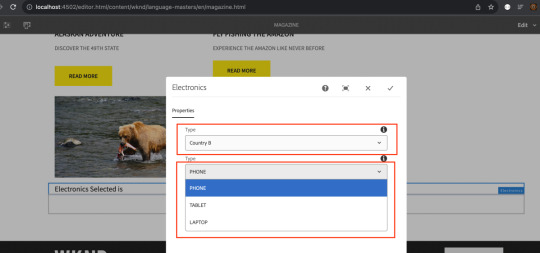#frontend template
Explore tagged Tumblr posts
Text
Supercharge Your Web Project with Next – A Free Bootstrap 4 UI Kit Template That Has It All
Why You Need a UI Kit Template Like Next If you’ve ever stared at a blank code editor wondering where to begin when designing a user interface, you’re not alone. The challenge of building clean, responsive components from scratch slows down even the most seasoned developers. That’s where the Next UI Kit Template becomes indispensable. This article is here to walk you through why this free…
#Bootstrap 4 Admin Template#Bootstrap 4 HTML5 UI Kit Template#Bootstrap Template Kit#Carousel#Clean#developer-friendly HTML5#Dropdown#free eCommerce UI kits#free template#Free UI Kit Bootstrap#frontend template#Frontend UI Template#HTML5 Component Library#Multipage#Multipurpose#On hover effect#Progress bar#Responsive UI Kit#responsive web templates#Slider#Smooth scroll#UI Kit Template#web development
0 notes
Text

DIGITAL_NECROPOLIS.exe - HTML Neocities/Nekoweb profile page template

LIVE PREVIEW
DOWNLOAD

#old web graphics#css#cybercore#html#html css#htmlcoding#web graphics#neocities#neocities template#web resources#neocities theme#neocities graphics#neocities themes#nekoweb#old tech#old internet#old web#oldweb#html theme#frontend#javascript#learn to code#ko fi shop#ko fi link#code#coding
96 notes
·
View notes
Text
💍 Shaadi ke liye Perfect Biodata chahiye?
Ab apna Marriage Biodata banaiye free mein – simple, elegant aur ready-to-download PDF format mein! ResumeEra laaya hai aapke liye best biodata format – bas details bhariye aur turant download kariye!
✅ 100% Free 📄 Printable PDF 📱 Mobile Friendly 🎨 Traditional aur Modern Designs
👉 Abhi banaiye: https://resumeera.xyz/marriage-biodata-format

Shaadi ke pehle pehla impression best hona chahiye! 🌸
#online resume platform#resumeera#create resume online#frontend resume builder#modern resume builder#professional resume templates#react-based resume builder#resume builder#resume builder for job seekers#resume customization#resume#job applications#jobsearch#jobs#job hunting#working#marriage biodata format#life#relationship#love#marriage#loyalty#partner
0 notes
Text
important to note that the only path to failing a class that i saw & was worried about (does not include paths where i just straight up give up. only paths where i try at least a little bit but am unsuccessful) is now closed. i had contributed 0 to this one group project, and was super lost and didn’t really know HOW to contribute, and said “hey guys i noticed i haven’t really had much chance to contribute, i don’t have a lot of ideas on how to help but i really want to pull my weight so if there’s anything you think i should do pls lmk” (to be clear this is not a “divide up the work & go” kinda project. we are trying to build something we don’t really know how to build. so one guy was like “i could try to build it this way?” and built it and now we’re, vaguely, improving on that) and somebody was like “yeah it’s tough to divide things up, maybe you could make a react app to present it?” so i made a react app. so now i’ve helped and nobody is going to go “professor she hasn’t helped!” and he isn’t going to say “0 for you, woman” and i won’t auto-fail. 🥳
#post tag#girl who is going to be ok#baby’s first from scratch react app everyone say you’re proud#look at her she’s a frontend dev!#(i used a template. i assume i’m allowed to use a template and still say it’s from scratch)#took me 3 ish hours i’m so goated#(… it was simple but also not. i had some issues)#(some issues i’ll never have again! that’s the beauty of baby’s first from scratch [x])#(like for example. i was trying to run state setters in the function for the component. very bad! i need a useEvent hook. now i know)
0 notes
Text

You can see Live Preview Here: https://elementor.galancer.com/rvs/landing-01/
#wordpress #landingpage #webdesign #websitedesign #wordpresstheme #wordpresstemplate #elementor #elementorpro #elementortemplate #web #ui
#wordpress#website#website template#web design#ui ux design#elementor#websites#webdesign#uidesign#ux#html#html css#css#javascript#frontend#html5
0 notes
Text
Accessing Component Policies in AEM via ResourceType-Based Servlet
Problem Statement: How can I leverage component policies chosen at the template level to manage the dropdown-based selection? Introduction: AEM has integrated component policies as a pivotal element of the editable template feature. This functionality empowers both authors and developers to provide options for configuring the comprehensive behavior of fully-featured components, including…

View On WordPress
#AEM#component behavior#component policies#datasource#datasource servlet#dialog-level listener#dropdown selection#dynamic adjustment#electronic devices#frontend developers#ResourceType-Based Servlet#Servlet#template level#user experience
0 notes
Text

Pure CSS Cards Hover
#css animation examples#css cards design#css card hover effects#codingflicks#html css#learn to code#code#frontend#css#html#css3#css animation#css card design#css card template
0 notes
Note
I work for a small charity, and as part of my job I have to ensure that the contact info for all the local schools are up to date. This involves going on the school websites, and I commented recently that all the "academy" schools' websites were creepy and made me think of military contractors, and I've suddenly put my finger on why:
It's the soulless, shiny corporatism vibe, with very little acknowledgement that either involves human beings with feelings and futures, or anything that has the potential to be messy or complicated. Extremely mechanical. Reminds me of Pink Floyd's The Wall if I'm honest. (Another work that draws together threads of trauma, war, patriotism, education, authoritarianism, celebrity idol-worship, and fascism. Among others.)
Doesn't help that every school in each academy chain has the same fucking website, with pertinent details changed. They even use the same stock photos of students sometimes, because the schools have virtually identical uniforms. Not something you'd necessarily notice as a parent who only visits the website of your kid's school, but when you see it five or ten times over, it's deeply unsettling.
The Wall is still great. I think we did that on Animation Night some time ago.
And you're not wrong! I definitely wonder about this sometimes when walking by a school. They almost always have some slogan with a few generic words like 'community' and 'excellence'. I end up wondering, who are these slogans for? Surely nobody will look and that and think, aha, this school values 'aspiration', unlike every other school?
But I think the pressures on school marketing are kind of opposite a lot of other, uhh, ecosystems. The reason you'd take your kids to a school is mainly that it's the nearest school that isn't obviously shit. The goal isn't to stand out and be interesting, it's to be reassuring - to present a suitably middle class looking face in other words. With that goal in mind, it makes sense to just copy what works for other schools. If they use a generic frontend template and it seems to work, why reinvent the wheel? I bet they outsource it to some companies who just put a few generic tweaks on their 'school website' template and call it a day. These days you could probably get an LLM to spit out the copy, it's not like anyone really reads most of the shit on a school website.
It's really funny that they all use the same stock photos though.
11 notes
·
View notes
Text
Telegram Mini App Development: Tools, APIs, and Best Practices in 2025
Introduction
Telegram Mini Apps have become a key part of digital interaction inside Telegram. In 2025, their ability to create seamless, app-like experiences inside the chat interface positions them as a smart choice for businesses and developers looking to build without platform switching. With an evolving developer ecosystem, expanded APIs, and native support for in-app payments, these apps combine the ease of bots with the richness of mobile-like UI.
What is Telegram Mini App Development
Telegram Mini App Development refers to creating apps that work inside Telegram using web technologies. These apps are web-based frontends powered by Telegram bots on the backend. Users access them without needing to download anything separately. The apps open inside Telegram's WebView, supporting full interaction with Telegram services like authentication, payments, and messages. This approach allows brands to keep users inside Telegram while offering personalized tools and services.
Why is Telegram Mini App Development Important
The shift from traditional bots to Mini Apps changes how users interact with services on Telegram. Mini Apps reduce friction. Users don’t have to exit Telegram or install anything extra. They can sign in, browse, pay, or submit forms without interruption. With a smoother flow and stronger visuals, brands can deliver a better experience. And since Telegram is growing in both personal and business use, tapping into this space can help companies stay accessible and relevant.

Laying the Foundation with Telegram Mini Apps
What Developers Can Do with Telegram Mini Apps in 2025
Build web-based apps powered by Telegram bots.
Use React or Vue for custom UI inside Telegram WebView.
Enable real-time chat services linked to backend logic.
Offer Telegram deep linking for instant app access.
Integrate payments, forms, and profile tools securely.
How Telegram Mini Apps Fit Inside the Platform’s Architecture
Mini Apps use Telegram's JavaScript APIs and work with the Telegram Mini App framework. The frontend (HTML/CSS/JS) is served via a Telegram Mini App hosting solution. The backend logic relies on Telegram inline bots. Telegram theme parameters allow UI styling to match light or dark Telegram modes, providing a native look and feel.
Core Tools Behind Telegram Mini App Development
Telegram Mini App SDK: Setup, Features, and Common Functions
The Telegram Mini App SDK includes everything needed to connect with Telegram’s client-side features. Developers can:
Set up button callbacks and navigation events
Detect Telegram theme parameters
Trigger full-screen modes
Handle version updates
Sync UI with Telegram Web Apps themes
Using Telegram Mini App Templates to Speed Up Development
Prebuilt templates reduce initial setup time. Developers can start with ready-to-edit layouts, component libraries, and verified SDK integrations. These templates align with Telegram Mini App UI/UX design guidelines, and help avoid layout issues inside the WebView.
Telegram Bot API and Its Role in Mini Apps
Connecting Logic and Interface Using Telegram Bot API
Telegram bots act as the backend brain of Mini Apps. They handle API requests, user authentication, and routing. Developers connect bot logic with frontend elements using Telegram JavaScript API functions. This allows users to send inputs, fetch data, or process transactions inside the Mini App.
Rate Limits, Permissions, and API Response Handling
Bot API calls are subject to rate limits. Developers must implement queuing or fallback handling. Permission management ensures that users only see content relevant to their profile or role. Proper response formatting helps reduce latency and improves experience.
Enabling UI Flexibility with Telegram WebView
How Telegram WebView Helps Deliver In-App Experiences
Telegram WebView allows developers to present full-screen apps inside chats. Brands like Malgo use this capability to create smooth flows, interactive screens, and responsive layouts. They integrate Telegram Mini App hosting and deep linking for consistent entry points across campaigns or support chats.
Supported Features and Restrictions of Telegram WebView
The WebView supports:
HTML5/CSS3 styling
Dynamic resizing
Custom fonts and icons
File uploads
Session persistence
Restrictions include:
Limited access to device hardware
No service workers
Cookies cleared per session unless managed via Telegram login
Streamlining Sign-In with Telegram Login Widget
Embedding Telegram Login Widget in Mini Apps
The Telegram Login Widget simplifies sign-in without separate credentials. Once users click the widget, Telegram confirms identity and returns profile data to the Mini App backend. This reduces form fill friction and improves conversion rates.
Handling User Data and Authorization Safely
User data from the widget includes Telegram ID, name, and profile photo. Developers should validate login requests using Telegram’s authentication signature system. Avoid storing extra data unless needed for personalization or compliance.
Payment Integrations Using TON and Telegram
Setting Up TON Payments Telegram Supports
Mini Apps can offer services or digital products through TON payments. Developers register their app with Telegram's payment gateway, link a TON wallet, and create buy buttons linked to bot logic.
Managing Invoices and Transactions Through Telegram Mini Apps
Bots send invoice messages, while the Mini App shows purchase status and receipts. TON smart contracts ensure settlement. This flow supports transparency, reduces fraud risk, and allows cross-border micropayments.
Deployment and Maintenance in 2025
How to Test Telegram Mini Apps Before Going Live
Testing involves:
Loading the Mini App in Telegram Test mode
Using staging servers for bot logic
Validating WebView behavior across iOS, Android, and desktop
Checking LCP and FID metrics inside the Telegram browser
Keeping Your Mini App Updated with Telegram’s Newest Tools
Telegram continues to release updates to the JavaScript SDK, bot APIs, and hosting guidelines. Developers should follow Telegram's changelogs, and update theme parameters or WebView triggers to stay in sync.
Final Thoughts
Telegram Mini App Development gives teams a direct way to offer smart, simple tools without users ever leaving the Telegram app. With strong APIs, flexible web tech, and native integration features, Mini Apps help deliver better interaction and service value. Explore Telegram Mini App Development for Your Business Now! The development cost depends on factors such as feature complexity, technology stack, customization requirements, and deployment preferences. Get in touch with Malgo for a detailed quote. Why Malgo Fits Telegram Mini App Development Better Than Most. One word: consistency.
Frequently Asked Questions About Telegram Mini Apps
What are the minimum requirements to build a Telegram Mini App? Basic web development skills and access to a Telegram bot with webhook setup.
How does Telegram Bot API support Mini App workflows? It connects frontend user actions to backend processing.
Can payments be processed directly within Telegram Mini Apps? Yes, using TON-based payment gateways.
Are there pre-made Telegram Mini App Templates available? Yes, several official and open-source templates are available.
What are the current limitations of Telegram WebView in 2025? Limited hardware access and session-based cookies.
1 note
·
View note
Text
i bought a domain for my family to share i couldnt delibrareate what framework to use cuz im trying. to accommodate Pet Site on it. but i finilly decided on slim framework 4 + twig templates + doctrine. so im trying to figure out how that all waorks but i need to set up a homepage on my new domain
i will be honest neocities has SUCKED In recent years their server goes down constantly with no warning/maintenace logs. both your site frontend and the site editors. so visitors cant even access your site at random and its been happening more and more. like wtf is the issue. i used to pay for premium but like its not worth it at $5/mo..... just switch to a dedicated server host!!!!!! its actually cheaper unless you specifically want more than like 10 static sites. im using hostinger.
also hostinger used to have 000webhost which is ran my test site and they nuked it >:( so i switched my test site to infinityfree. which is running lovely. and support seems responsive there and helps you figure out how to work around free account limitations, like no domain e-mail.
anyway i was working off an old pet site framework called mysidia addoptables from like 2011 (last release was 2021) but recently i decided i cant work with it anymore it's too janky, dated, and just messed up 😅 i love the community that still hangs around it but the code is FUUUUUUCKED. so i'm starting from scratch...
this is also still my firsrt foray into php but mysidia has taught me BAD HABITS.... i literally have a folder of screenshots where i just screencap the code and soyjak at how bad it is. (why did you install smarty template and htmlpurifier and then... barely use them..........)
ANYWAYS. all my pet site progress is no longer very easy to catalog cuz it's just boring code. but by god it's easier to figure out how to roadmap it now that i'm not working with the stupidiest base code. i guess you can look at these upcoming pets tho :^) (wont be released til i draw all their other painted forms)


2 notes
·
View notes
Text
create your marriage biodata in hindi and english as you wish in english
#resumeera#frontend resume builder#online resume platform#create resume online#professional resume templates#modern resume builder#react-based resume builder
0 notes
Text
16/02/2024 || Day 14 (dop)
TLDR:
🔸 practised ASL fingerspelling
🔸 worked on switching the payment amount based on payment frequency (i.e. monthly to yearly, vice versa) and started code for dynamically outputting the results for Frontend Mentor project
🔸 sketched a page in my sketchbook

------------------------------------------------------------------------------
Work
Frontend Mentor - I started to tackle the big things today in a very distracted manner. The first thing that I needed to do was to figure out how to access object properties dynamically, so that way I don't need to have a million if-else statements and hard-code the values. So I created a user object that will contain all the appropriate info for the user that I can then display at the end (in step 4), and a payment plan object that'll contain the name of the plan, and the monthly and yearly rate. This way, when filling out the user info for the plan, I can use my local variables to find the info in the payment plan object and "copy" it to the user's info. It was a pain in the butt to do and I still don't understand it, but hey, the code works! Essentially, I created a variable that was a template literal containing the specific field I want, but making it be a template literal allowed me to have the variable change and not be hard-coded. Then, the code goes to the correct object property and I can assign that value to my user object's appropriate property.



Now with this janky code working, I can start to wrap up the functionality of this project!
5 notes
·
View notes
Text

Get a frontend-ready 👍 solution to build a website for investment and forex trading services.
Build your investment and forex trading platform based on the BitProfit Website Template and unlock 🔓 exciting features.
✅ User-friendly design
✅ Blog page
✅ CTA buttons
✅ Header and Footer
Visit Now-https://theme.bitrixinfotech.com/product-detail/bit-profit-html5-template
#web template#website template#cryptocurrency#crypto#web design#website#token#crypto token#bitcoin#investment#tranding#tailwind
3 notes
·
View notes
Text
Frontend Technologies (React.js and Angular.js)
Ever since the advent of the world wide web, technologies have been researched and created to streamline the creation of Web pages that are displayed to a client upon the client's request. These web pages began by being static and non-interactive with the use of basic HTML and CSS. After awhile, the Javascript programming language stormed the world of web applications and brought a layer of interactivity, finesse, and dynamism to web applications. Since then, more technologies, most of which are built on the basic initial technologies, have come out. Two of the most popular and effective technologies are React.js and Angular.js. In this article, an attempt would be made to highlight the differences in these technologies and what makes them unique and powerful.
Firstly, React.js is built on Javascript and produced and managed by Meta while Angular is also built on TypeScript but it was produced and managed by Google.
React is a Javascript library while Angular is a framework.
React makes use of a "templating langauge" called JSX to extend Javascript into HTML and it is rendered in the server side while Angular extends the functionality of HTML by adding more attributes like "ng-bind" and it is client side rendered.
React works by using a virtual DOM, while Angular uses the real DOM.
React is a highly scalable library because of the reusability of its components while Angular is less Highly scalable.
Having itemised these differences, they each have their strengths and what makes developers prefer one over the other. React has support for mobile App development, reusability and predictability of code, one can learn it really fast Etc. Angular has faster server side rendering, fewer lines of code, takes time to learn, Etc.
I specifically prefer React to Angular which is why I am glad that React is being used in the HNG internship https://hng.tech/internship where I am currently interning. I have used React to build highly interactive web applications and look forward to honing my skills better as I use it for more daunting projects in the HNG internship. Check out HNG on their website https://hng.tech/premium
2 notes
·
View notes
Text
Accessing Component Policies in AEM via Path-Based Servlet
Problem Statement: How can I leverage component policies chosen at the template level to manage the dropdown-based selection? Introduction: AEM has integrated component policies as a pivotal element of the editable template feature. This functionality empowers both authors and developers to provide options for configuring the comprehensive behavior of fully-featured components, including…

View On WordPress
#AEM#Component#component behavior#component policies#dialog#dropdown selection#dynamic adjustment#electronic devices#frontend developers#Path-Based Servlet#Servlet#template level#template policies
0 notes
Text
Certainly! Let’s explore how to build a full-stack application using Node.js. In this comprehensive guide, we’ll cover the essential components and steps involved in creating a full-stack web application.
Building a Full-Stack Application with Node.js, Express, and MongoDB
1. Node.js: The Backbone of Our Application
Node.js is a runtime environment that allows us to run JavaScript on the server-side.
It’s built on Chrome’s V8 JavaScript engine and uses an event-driven, non-blocking I/O model, making it lightweight and efficient.
Node.js serves as the backbone of our application, providing the environment in which our server-side code will run.
2. Express.js: Simplifying Server-Side Development
Express.js is a minimal and flexible Node.js web application framework.
It provides a robust set of features for building web and mobile applications.
With Express.js, we can:
Set up middlewares to respond to HTTP requests.
Define routing rules.
Add additional features like template engines.
3. MongoDB: Storing Our Data
MongoDB is a document-oriented database program.
It uses JSON-like documents with optional schemas and is known for its flexibility and scalability.
We’ll use MongoDB to store our application’s data in an accessible and writable format.
Building Our Full-Stack Application: A Step-by-Step Guide
Setting Up the Environment:
Install Node.js:sudo apt install nodejs
Initialize a new Node.js project:mkdir myapp && cd myapp npm init -y
Install Express.js:npm install express
Creating the Server:
Create a basic Express server:const express = require('express'); const app = express(); const port = 3000; app.get('/', (req, res) => { res.send('Hello World!'); }); app.listen(port, () => { console.log(`Server running at http://localhost:${port}`); });
Defining Routes:
Define routes for different parts of our application:app.get('/user', (req, res) => { res.send('User Page'); });
Connecting to MongoDB:
Use Mongoose (a MongoDB object modeling tool) to connect to MongoDB and handle data storage.
Remember, this is just the beginning! Full-stack development involves frontend (client-side) work as well. You can use React, Angular, or other frontend libraries to build the user interface and connect it to your backend (Node.js and Express).
Feel free to explore more about each component and dive deeper into building your full-stack application! 😊 12
2 notes
·
View notes